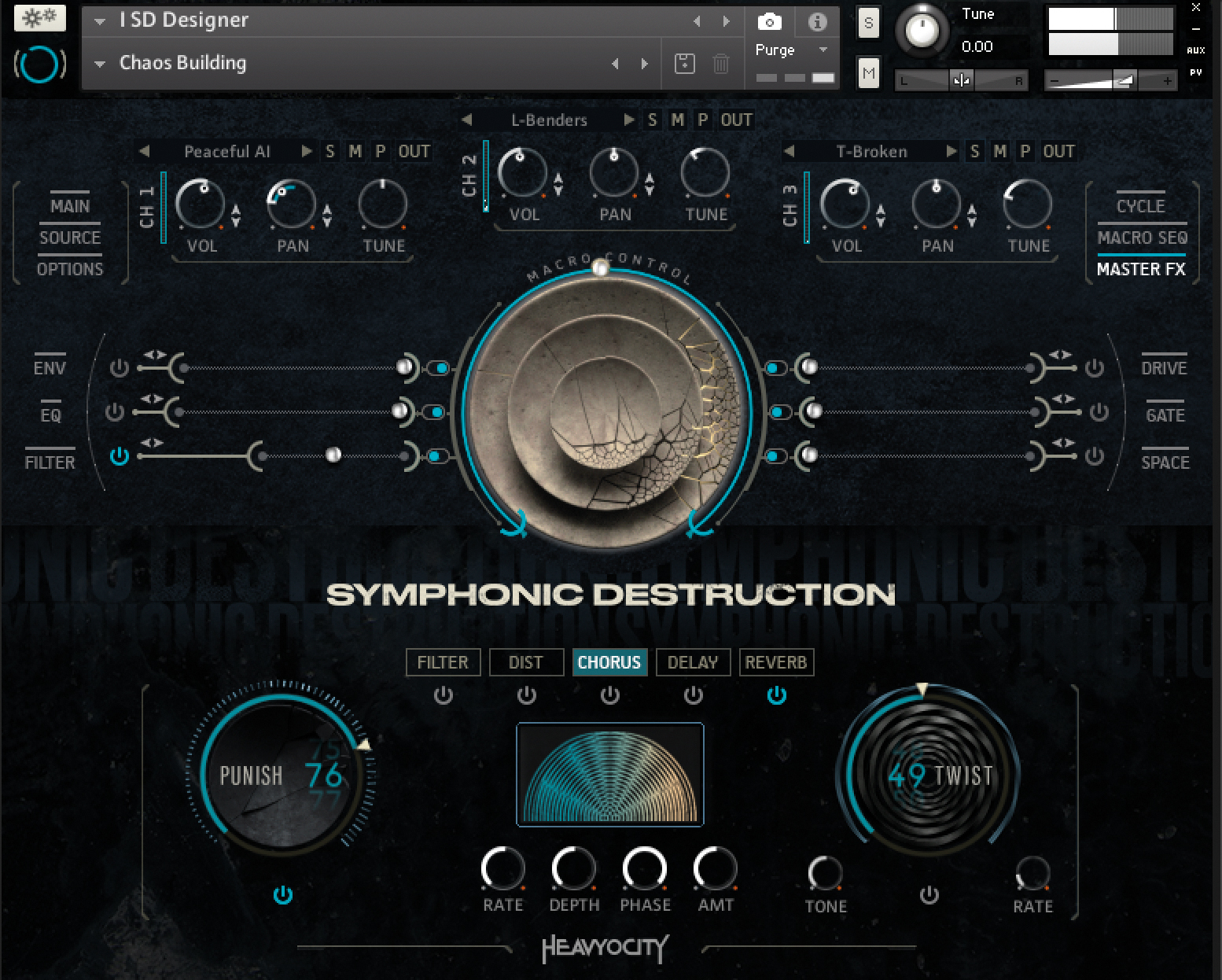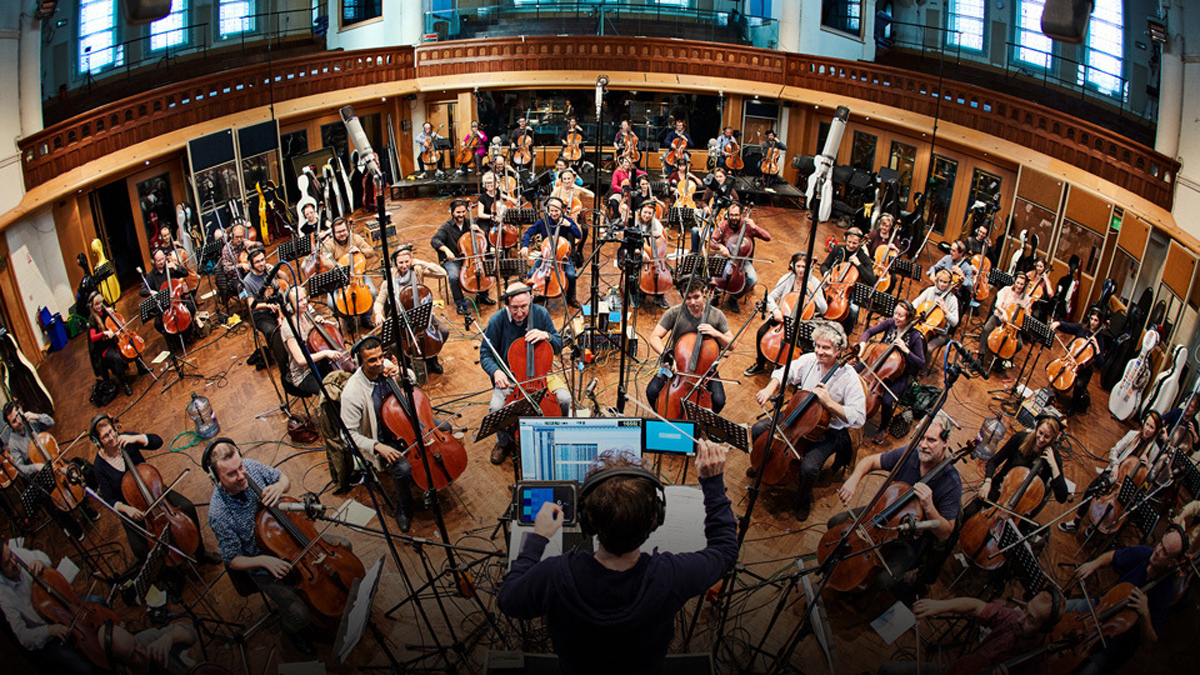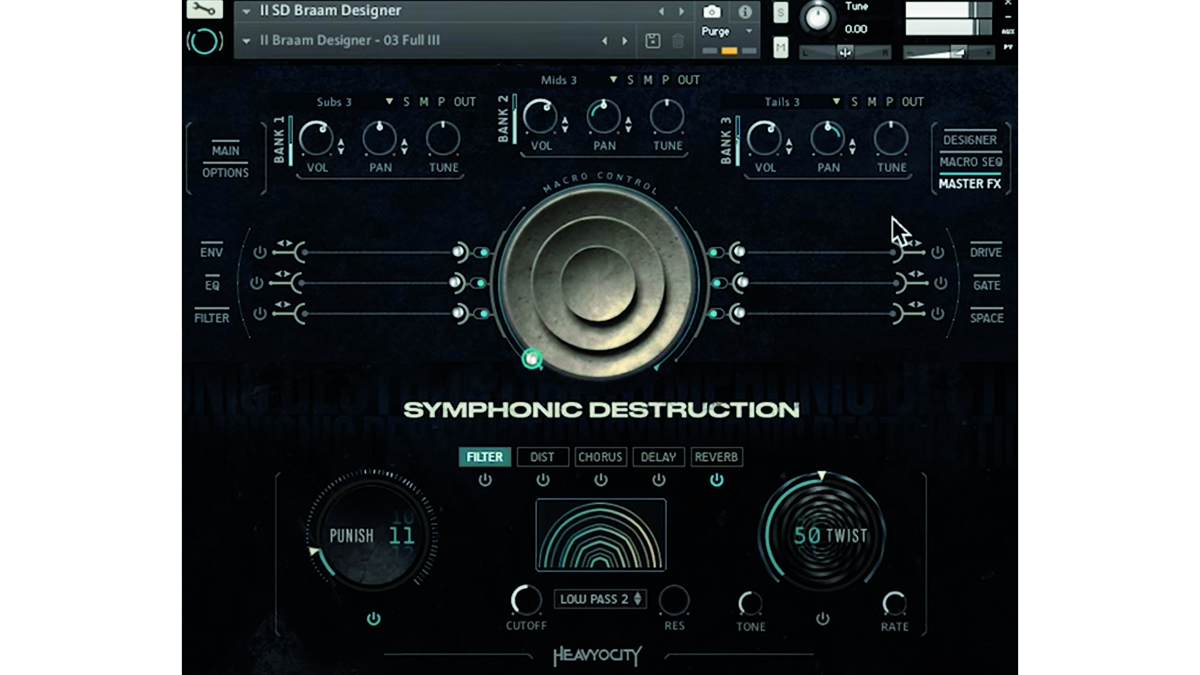MusicRadar Verdict
Typical exemplary Heavyocity stuff: Symphonic Destruction is the ultimate means to wrangle the most epic scores.
Pros
- +
Creates big soundtracks.
- +
Designers can be malleable machines in your composing workflow.
- +
Perfomers enhance sound exploration.
- +
Huge array of snapshots.
- +
Easy learning curve and slick UI.
Cons
- -
Not for every composer.
MusicRadar's got your back
Heavyocity Symphonic Destruction: What is it?
Fiery, powerful, destructive, aggressive – all overly-used synonyms for the kind of sound mangling for which Heavyocity is renowned. Ever since 2012’s game-changing Damage blew the lid off home cinematic percussion, the company has been central to discussions around the best methods of constructing epic soundtracks and organic-sounding textures.
While Damage and its recently released sequel emphasised dramatic percussion, the team have now applied a similar approach to the entire orchestra. Symphonic Destruction’s central concept is explained pretty succinctly by its title – this isn’t a typical string sample library, more of a meticulously crafted chaos machine.
Symphonic Destruction is a rich resource of over 11,800 samples, in a download that clocks in at a surprisingly slight 17.4GB and leans on Kontakt 6 (or the free Kontakt player) to run. Installation is a breeze and within half an hour we’re confronted with the software’s idiosyncratic UI.

Heavyocity Symphonic Destruction: Performance and verdict
As with Damage, Heavyocity is keen to reinforce the idea that Symphonic Destruction is a customisable toolkit as opposed to merely a bank of well-curated samples (which it also is, of course). By default, we enter into the SD Designer window.
This is the flagship of the three main ‘Designers’ as it allows you to weave together three channels of the software’s myriad treated sounds into various selectable places on your MIDI keyboard, or let the software intelligently concoct new sonic monstrosities.
The Macro Control and Sequencer let you program animated modulations and rhythmic pulses, too.
It’s wise to get a sense of just what aural palette we’re working with. Heavyocity has neatly curated this meticulously designed sample library into easy-to-navigate ‘snapshots’ (presets).
Want all the hottest music and gear news, reviews, deals, features and more, direct to your inbox? Sign up here.
Damaged is a repository of sonically spoiled hybrid orchestral samples, a good example of which is the pulsing dystopian scene-setter Crumbling Waves, the ominous, evolving horror of Grimy Divebombs and a pulsing arp/shimmering synth-stab combo of Strangest Things, which might sound eerily familiar to fans of a certain Netflix show.

• Hans Zimmer Strings
A wide range of unique, sublime samples, incorporating his trademark off the wall playing.
• Zero G Ethera Gold 2.5
Immaculate vocals, bombastic perc and sweeping violins.
FX & Textures includes some long-evolving, sound-designer-baiting swells and transitions, while Hybrid enhances the symphonic samples with synthesis.
Loop Combos provide an assortment of rhythmic sounds and matching leads/strings and impacts. Even the most arbitrary of key presses sounds like something you’d hear pumping from the speakers as we gawp at the latest big-screen trailers.
There’s a lot to mine, but Heavyocity has helpfully provided a set of ‘All Stars’ –specially selected snapshots from across the collection that serve as something of an easy-to-dive-into ‘greatest hits’.
These textures range from the magisterial Portato Fallout, the chilly wilderness of Not So Peaceful and the Blade Runner-recalling Vangelish Analog, each from the three central snapshot categories. All of which, as implied by their earmarking, are exquisite.
Group on
With each snapshot, or any self-made sound, there are three respective layers working in tandem: the interface gives a central view of a main macro controller, (something familiar to most Heavyocity aficionados) with orbiting controls for Envelope, EQ, Filtering, Drive, Gate and Space.
Here is where we can personalise some of these startpoints, unpicking the three channels that make up Heavyocity’s snapshots, and switching out different source sounds, modifying them with a high level of finesse.
Continuing our Designer tour, the next section is the Loop Designer, which allows you to build up living, shifting flows.
Once again we select three sound sources as the heart of our loop, this time divided into a more rhythmically focused selection of folders, including Motif and Motif reversed, which spawn repeating melodic earworms.
This is a slick, fast route to instant cinematic tension, with loops available in either straight or triplet mode.

Deep impact
Symphonic Destruction’s third designer is the whallop-packing Braam Designer, intended to provide those huge subby tones and impacts that are now quintessential in modern cinema.
The sub, mid and tail of your Braam can be switched between 36 sounds per layer, and overlaid to various positions on your MIDI keyboard for performative control. Each of these can be panned, tuned or sequenced.
Even playing with a handful of these combinations yields a timbre of room-shaking size.
If you’re someone who earns a crust as a regular fisher for trailer commissions, then this is perhaps the most effective tool in Symphonic Destruction’s arsenal. And it’s particularly so if you also invest in Heavyocity’s percussive legend, Damage 2, with which this software partners with exquisitely.

Symphony for the devil
While the three Designers are undoubtedly a major focus of Symphonic Destruction, the Performers section grants a much more musical and creative way to get started generating your own textures.
There are seven performer patches, each containing a range of articulations. These are divided into now-familiar niches, such as Damaged and Hybrid. There’s also a range of pedal-saturated and guitar-tinged samples.
Damaged Guitars features Mad Max-recalling grunge-metal guitar loops which can inject a heap of hefty menace to a piece.
There’s a lot of ready-to-go goodness here, and yet all of these patches can simply be creative launchpads as you switch out your channels, as well as adjust mic positions and modulation effects to mobilise your own sound palette.
Performers are a neat way to navigate the software’s essential building blocks.
If you’re looking to create something that evokes bucolic beauty, you know where the door is
If you’re a composer looking to create something that evokes bucolic beauty, or provides a subtle undercurrent to a dialogue-heavy project, you know where the door is.
Symphonic Destruction is aimed squarely at team blockbuster. Its sounds are big, brash and utterly brilliant, manipulated via these two parallel strands, Designer or Performer.
Whether it’s designing an alien megacity, a hulking robot invasion or a neon-lit utopia, a more robust creative colleague we can’t imagine.
MusicRadar verdict: Typical exemplary Heavyocity stuff: Symphonic Destruction is the ultimate means to wrangle the most epic scores.
Heavyocity Symphonic Destruction: The web says
"There is so much jaw-dropping content in this library that it will have you churning out epic cues in minutes."
Sample Sound Review
Heavyocity Symphonic Destruction: Hands-on demos
Heavyocity Media
Sample Library Review
William Morris Music
Alex Pfeffer
Heavyocity Symphonic Destruction: Specifications
- 26.71GB uncompressed (17.4 GB on Disk with NI lossless compression).
- Powered by the Kontakt 6.6.1 Engine.
- Kontakt 6.6.1 (Player) or later.
- Komplete Kontrol integrated (NKS-ready).
- Available as direct download only.
- Standalone, VST, AU, AAX.
- Minimum System Requirements: macOS 10.13, 10.14, 10.15, or 11 (latest update), i5. Windows 7, Windows 8, or Windows 10 (latest Service Pack), Intel Core i5 or equivalent CPU, 2 GB RAM. Graphics hardware support for OpenGL 2.1 or higher. 4GB RAM (6GB recommended for large KONTAKT Instruments).
- CONTACT: Heavyocity
Computer Music magazine is the world’s best selling publication dedicated solely to making great music with your Mac or PC computer. Each issue it brings its lucky readers the best in cutting-edge tutorials, need-to-know, expert software reviews and even all the tools you actually need to make great music today, courtesy of our legendary CM Plugin Suite.

